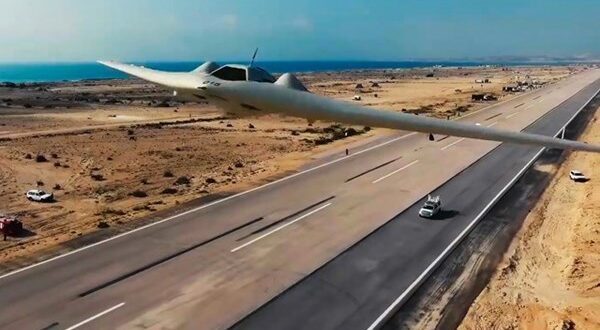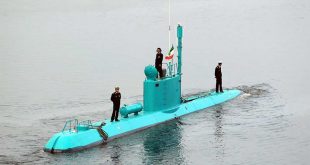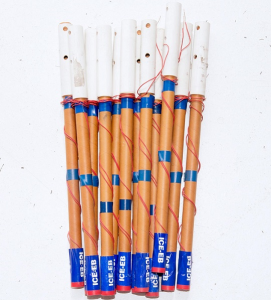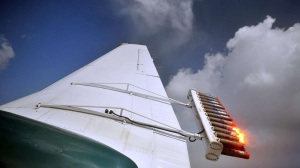IRGC Seeding Clouds by Iranian Version of US-Made RQ-170 Drone

TEHRAN (FNA)- The Islamic Revolution Guards Corps (IRGC) is using the indigenized version of RQ-170 drones – manufactured through the reverse engineering of a similar American pilotless plane that was downed by Iran in 2011 – for seeding clouds over the Iranian territories.
Following the sharp decline in rainfall in Iran in recent years, the Islamic Revolution Guards Corps came to work on cloud seeding and started using its flying equipment and manned and unmanned aircraft.
In cloud seeding, manned and unmanned aircraft fly into rain clouds (CB clouds) and shoot bullets containing iodide silver or biofoam nanoparticles into the clouds, causing them to be seeded and rain.

Firing system for seeding clouds
Low costs and high maneuverability of drones have made the device a golden option in cloud seeding, and the IRGC Aerospace Force has been seeding the clouds using the Iranian version of the RQ-170 drones by 5 groups in different parts of the country in the past 2 years.
The Iranian version of the RQ-170 drone has been manufactured through the reverse engineering of the US drone which was tracked and downed in Iran late in 2011 and has been equipped by the IRGC with bombing capability in addition to its original surveillance capabilities.
Iran has downed many other US drones as well, and they have always started reproducing them after conducting reverse engineering on them.
Iran announced on December 4, 2011 that its defense forces had downed a US RQ-170 aircraft through a sophisticated cyber attack. The drone was the first such loss by the US. US officials have described the loss of the aircraft in Iran as a setback and a fatal blow to the stealth drone program.
The aircraft is among the highly sensitive surveillance platform in the CIA’s fleet that was shaped and designed to evade enemy defenses.
Since December, 2011, Iran has hunted down several more US drones of various types.
In January 2013, a deputy commander of the Iranian Navy announced that the country’s Army had hunted two more advanced RQ type UAVs.
“The air-defense units of the Army have hunted two enemy drones,” Deputy Commander of the Iranian Navy for Coordination Rear Admiral Amir Rastegari told FNA.
“These drones were from 11th series of the RQ class, and one of them was hunted in Shahrivar 1390 (August 21-September 19, 2011) and the other one in Aban (October 22-November 20, 2012),” Rastegari said, adding that the Army research center is now studying the two UAVs.
“Much of the data of these drones has been decoded by the Army’s Jihad and Research Center,” he said, but did not provide any further detail.
The remarks by the Iranian commander came after Iran announced on December 4, 2012, that the IRGC Navy had hunted a US UAV over the Persian Gulf after the drone violated the country’s airspace.
The IRGC navy commander announced at the time that the hunted UAV was a ScanEagle drone, adding that “such drones are usually launched from large warships”.
ScanEagle is a small, low-cost, long-endurance unmanned aerial vehicle built by Insitu, a subsidiary of Boeing.
Iran later reproduced its own model of ScanEagle through reverse engineering techniques.
Also, in June 2019, a US-made Global Hawk spy drone was shot down by the IRGC on the Southern coasts of Iran in Hormozgan province today.
The IRGC announced in a statement that the US-made Global Hawk surveillance drone was brought down by its Air Force near the Kouh-e Mobarak region in the Central district of Jask after the aircraft violated Iran’s airspace.
The RQ-4 Global Hawk unmanned aircraft system (UAS) can fly at high altitudes for more than 30 hours, gathering near-real-time, high-resolution imagery of large areas of land in all types of weather.
 WILAYAH NEWS VOICE OF THE GLOBAL AWAKENING
WILAYAH NEWS VOICE OF THE GLOBAL AWAKENING








